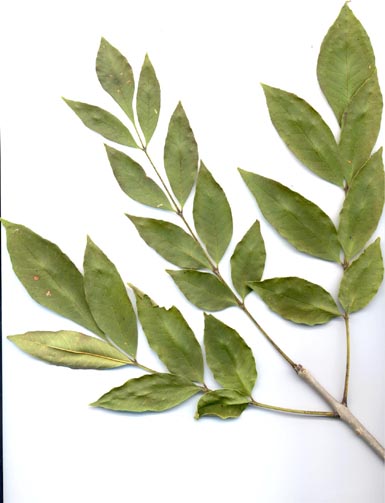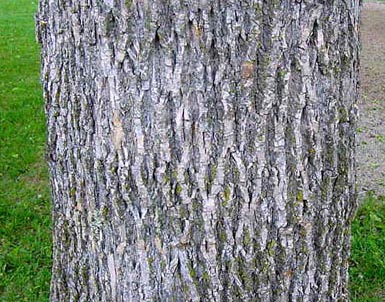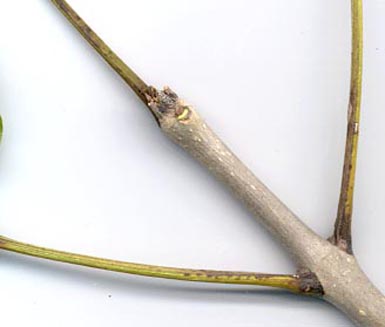Form: Small to medium sized tree reaching from 30 to 50 ft. in height and 20 in. in width. Irregular shaped crown with a poorly formed trunk.
Leaves:
Arrangement: opposite; odd-pinnately compound with 5-9 leaflets
Shape: Elliptic to lanceolate
Margin: serrate
Texture: Glabrous to silky above, pubescent below
Venation: N/A

Bark: Grayish brown with furrows progressing into narrow, irregular, interlacing ridges.

Twigs and buds: Varying from stout to moderately slender, gray to greenish brown in color. Terminal buds are conical to ovate with a rusty brown pubescence. Lateral buds are reniform to triangular in shape.


Flowers and fruit: Flowers before leaves appear. Male and female are both borne in glabrous to tomentose panicles. Samara as a fruit.
Distinguishing characteristics: Pinnately compound with 7-9 leaflets, serrate, samara as fruit, twig flattened at the nodes. Bud sits on top of the leaf scar. Usually found on moist sites.
Range: Eastern U.S. to Canada and the northern Great Plains.
Silvics: Intermediate tolerance. Moist bottomlands, stream side species. Once established can survive on dry sterile soils, adaptable to the extremes of climate.
Ecological and cultural importance: High strength, hardness, high shock resistance, and excellent bending properties, allow it to be used in specialty items such as tool handles and baseball bats. Popular as a shade tree in residential areas due to its good form, adaptability to a wide range of sites. The seeds are browsed by a number of game and non-game animals.